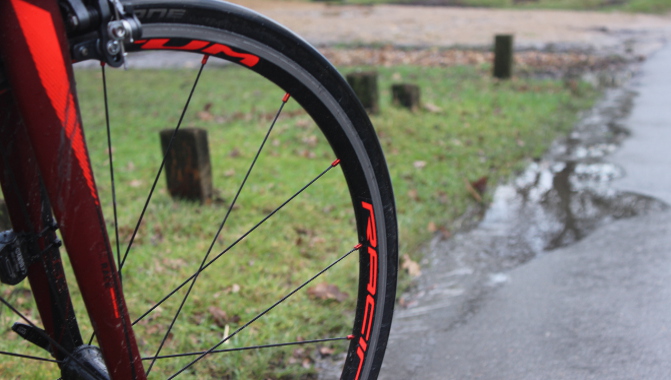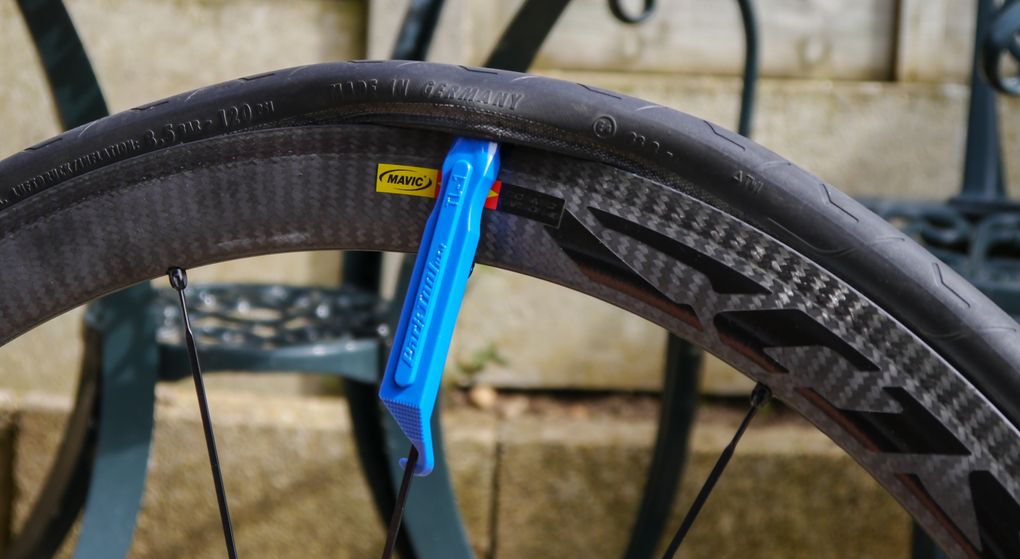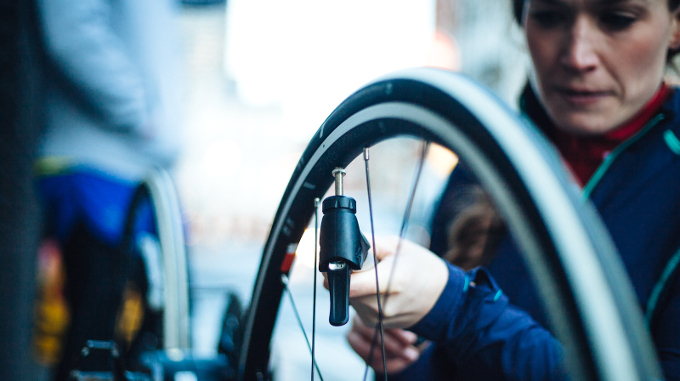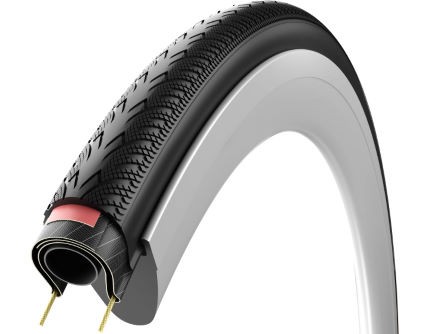Tyre width

Once upon a time, nearly all road cyclists used 23c tyres which were believed to be nippier. However, 25c options have become much more popular these days, with the belief that they offer a lower rolling resistance and are therefore faster. Add to the equation that wider tyres present a larger contact area to the ground, offering more confidence and grip on corners and in the wet, and they’re the most popular choice for winter tyres.
It may only be 2mm, but the extra width does feel different – corners feel much safer but acceleration feels spongey for some – you’ll only find out if they’re for you by trying them.
You can go wider still, with 28c and upwards available. However, there will be a limit as to the clearance your bike can provide, so check before you buy. The bigger the tyre, the lower your tyre pressure (PSI) should be.
Ideal Tyre Pressure in Winter

It’s also worth remembering that a slightly lower PSI (Pressure Per Square Inch) provides you with a wider contact patch – therefore more grip, which is important in the wet.
Ask the Expert: How Often Should I Pump My Bicycle Tyres?
Challenge Tyres make some excellent handmade tyres, and when we asked one of their experts Morgan how much we should alter tyre pressure in the wet he explained: “The maximum tire pressure is required by international law [the International Standards Organization or ISO] to be marked on the tire. This max pressure has nothing to do with the optimal operating pressure (called OOP)!” – In other words, don’t just glance at the number on the side wall, and pump up to that pressure – especially not in winter.
A number of factors affect ideal tyre pressure:
- Road conditions – smooth roads mean you can use higher pressure, bumpy roads warrant lower pressure.
- Weather conditions – dry days allow higher pressure, wet roads mean lower pressure.
- Rider weight – this has been overlooked a lot on the past. A 90kg man will need to run a higher pressure than a 60kg woman. The lighter rider who won’t push down on the tyre as much, causing the ride to feel much more bumpy, and thus slower as forward momentum is lost. All too often, riders on the lower end of the weight scale fail to adjust their tyre pressure.
- Rider speed – if you’re cruising along at a relaxed pace, comfort is probably more important than acceleration. So go for lower pressure. Racers might want higher pressures – but should bear in mind that on most rougher UK roads more speed could be gained by a lower pressure that travels smoothly over bumps.
Morgan explained: “The top eight World Tour Road teams have rock star mechanics who keep a table of tire OOP for each rider (by weight), tire volume and course. More top Road teams know the OOP equation changes from Strada Bianca to Paris-Roubaix to Tour of Flanders to concrete or asphalt, unserviced by years of recession or paved yesterday for the Tour de France. They know OOP needs to be adjusted for the rain and even more if it is the first rain after weeks or months of dry when oil or gas or exhaust accumulate where traffic is high and roads may become slick as ice. When the tire patch is optimally adjusted to keep as much soft, supple rubber on the road as much of the time as possible – especially in those corners deformed by heavy vehicles braking – all riders relax, focus on the moment and perform their best.”
Ok – so you don’t have a personal mechanic with a unique chart just for you – but you can create your own. Learning what your ‘OOP’ is takes trial and error. Once you’ve worked out the ideal number for your weight in normal conditions – you can reduce that by 10psi if it’s wet, and a further 10psi if the road surface will be bad.
If you’re looking for an example – here’s a look at the ‘sort of’ pressures I usually run on my road bike. I’ve only included smooth, purpose built race circuits and ‘average’ UK roads – if I was riding really rough country lanes I’d probably let a little more air out.
Disclaimer: these work for me, and can give you an idea – you’ll need to test and learn to create your own table.
| Rider weight: 58-59kg |
23mm |
25mm |
| Dry, good surface (eg race circuit) |
100psi |
90psi |
| Dry, rutted surface (most UK roads) |
90psi |
80psi |
| Wet, good surface (eg race circuit) |
90psi |
80psi |
| Wet, rutted surface (most UK roads) |
80psi |
70psi |











